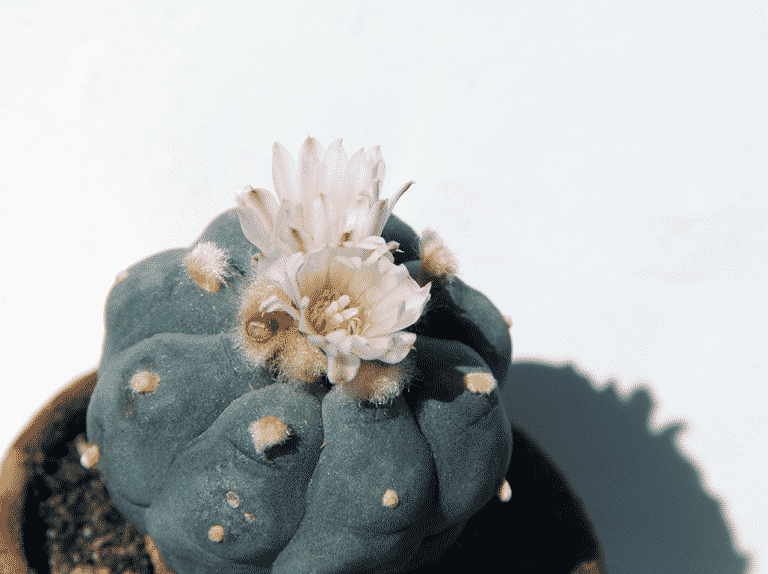Peyote (Mescaline) is an amphetamine and hallucinogen
Many people have heard of Peyote (mescaline) but are not quite sure what it is. Peyote is a small, smooth, blue- or yellow-green, spineless cactus that is native to Mexico and the southern U.S. The plant has small extensions called “buttons” containing mescaline. Peyote buttons are used primarily for hallucinogenic purposes. The buttons are removed from the cactus and dried and chewed or soaked in water.
Peyote is popularly used for its psychoactive effects, but has also been used for medical purposes among Native American Indians to treat pain (even during childbirth), diabetes, blindness, joint pain, skin wounds, and fever.
Peyote (mescaline) facts
Peyote is one of the oldest psychedelic agents known. Aztecs of Pre-Columbian Mexico considered the cactus magical and divine. The Native American Church still uses it to treat illnesses, communicate with spirits, as part of prayer ceremonies, and to predict the future.
Peyote is a keystone in The Native American culture, but use is permitted only within the church. Peyote is considered a Class 1 substance and use is illegal in the U.S. Minor members of the Native American Church are prohibited from using Peyote.
Peyote (mescaline) methods of use
There are several ways to use peyote. The dried buttons are harvested from the peyote cactus, and then it can be eaten, brewed as a tea, or turned into a powder that can be put in capsules. Peyote can also be smoked. The powder is called mescaline sulfate — the purest form of mescaline. It’s also the strongest form and the most likely to be addictive. Peyote has a strong and bitter taste.
Peyote side effects
People often think that since peyote is natural, that it is a harmless to use recreationally, but this is not necessarily true. Mescaline produces perceptual, cognitive, and emotional experiences that vary widely among users based on dose size, setting, expectations, personality, and drug history. The only documented long-term effect of mescaline is a possible prolonged psychotic state similar to that of paranoid schizophrenia.
Peyote is classified as a hallucinogen like LSD. Peyote trips can last up to 12 hours and as best described as having an altered sense of perception and way of thinking. Sometimes there is a crossover of the senses and hallucinations.
Peyote physical effects:
- Numbness, tension, anxiety, rapid reflexes, muscle twitches and weakness, impaired motor coordination, dizziness, trembling, dilation of the pupils
- Increased blood pressure and heart rate
- Intense nausea and vomiting
- Appetite suppression
- Elevated body temperature and sweating
- Chills and shivering
Peyote psychological effects
- Vivid mental images and distorted vision
- Synesthesia: perception of seeing music or hearing colors
- Altered space and time perception
- Joy, exhilaration, panic, extreme anxiety, or terror
- Distorted sense of body (users can feel either weighed down or weightless)
- Heightened sensory experiences (i.e. brighter colors, sharper visual definition, increased hearing acuity, more distinguished taste)
- Difficult focusing, maintaining attention, concentrating, and Loss of sense of reality; melding past experiences with present
- Preoccupation with trivial thoughts, experiences, or objects
- Highly adverse reactions (“bad trip”), including frightening hallucinations, confusion, disorientation, paranoia, agitation, depression, panic, and/or terror
Peyote use is not common
Peyote use is fairly uncommon. As of October 2018, over 20 million Americans admitted to having tried a hallucinogen in the past, and 1.3 million admitted to taking them on a regular basis. But of all those psychedelic drugs trips, almost none of them are on peyote. The most popular was MDMA. The plant is rare and therefore use is rare.
The plant is actually considered an endangered species in parts of Texas.
What is mescaline
Mescaline belongs to a family of compounds known as phenethylamines, making it quite distinct from the other major psychedelics such as LSD and psilocybin, which belong to the indole family. Many synthetic “designer” psychedelics, such as ecstasy (MDMA) and 2C-B, are phenethylamines, and are related to the chemistry of mescaline. The chemical structure of mescaline is very similar to that of the neurotransmitters dopamine and norepinephrine, thus the drug can interfere with their actions in the brain.





















